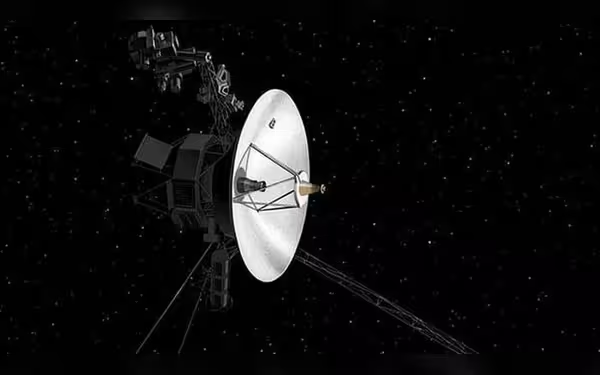Thursday, November 7, 2024 10:52 PM
NASA's Voyager 1 Resumes Communication After 1981 Device Activation
- Voyager 1 breaks silence after days of uncertainty.
- Engineers detect faint signal from backup transmitter.
- Voyager 1 remains the farthest human-made object.
 Image Credits: geo
Image Credits: geoNASA's Voyager 1 resumes communication after a period of silence, showcasing resilience in space exploration.
In a remarkable turn of events, NASA's Voyager 1 spacecraft, which is currently 15.4 billion miles away from Earth, has recently broken a period of silence that left scientists feeling uncertain about its future. Launched in 1977, Voyager 1 is one of the few spacecraft to have ventured into interstellar space, far beyond the planets of our solar system. Initially designed to study Jupiter and Saturn, its mission expanded to include Uranus and Neptune, making it a vital part of our understanding of the cosmos.
On October 16, 2024, Voyager 1 encountered a significant issue when it was commanded to activate a heater. Instead of responding as expected, the spacecraft entered its fault protection system, which is a safety measure designed to protect it from potential damage. This unexpected behavior led to the shutdown of its primary X-band transmitter, leaving NASA engineers worried that they might never hear from the probe again.
By October 19, all communication with Voyager 1 had ceased, raising alarms about the mission's viability. However, the situation took a miraculous turn when engineers from the Deep Space Network, a system of large radio dish arrays on Earth, managed to detect a faint signal from the spacecraft's backup S-band transmitter. This backup transmitter operates on a weaker frequency, and its functionality was uncertain due to the spacecraft's age and extreme distance.
NASA has since reported that the team is diligently working to gather information to understand what went wrong and to restore Voyager 1 to normal operations. The fact that both Voyager 1 and its twin, Voyager 2, have been operational for nearly 50 years is a testament to human ingenuity and the durability of these spacecraft, which were originally intended to last just five years.
As Voyager 1 continues to speed away from the solar system at over 38,000 miles per hour, it remains the farthest human-made object from Earth. Commands sent from mission control take 23 hours to reach the spacecraft, and another 23 hours are needed for a response. This incredible journey into the unknown not only expands our knowledge of the universe but also serves as a reminder of the challenges and triumphs of space exploration.
The recent communication from Voyager 1 is a beacon of hope for scientists and space enthusiasts alike. It highlights the resilience of technology and the importance of continued exploration. As we look to the stars, we are reminded that even in the vastness of space, connections can still be made, and mysteries can still be unraveled. The journey of Voyager 1 is far from over, and its story continues to inspire generations to come.













